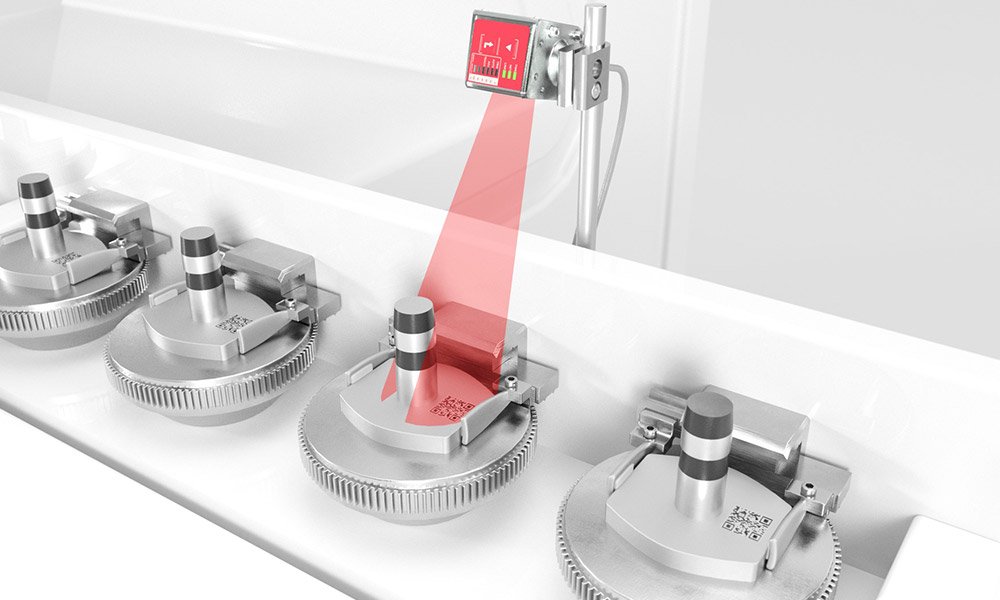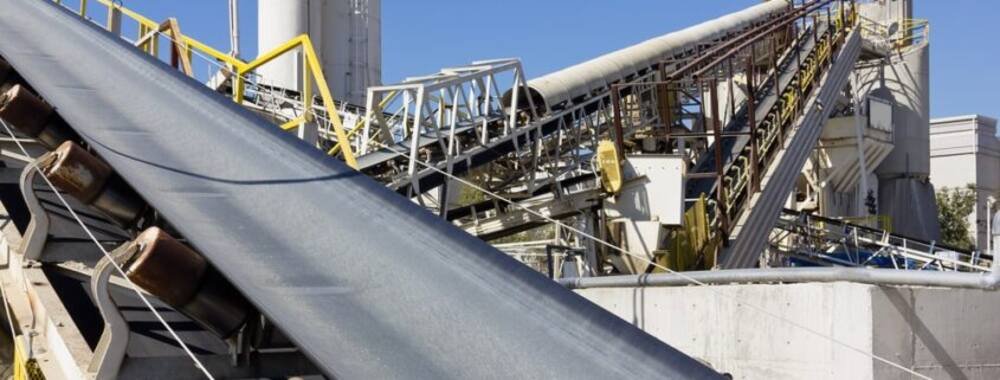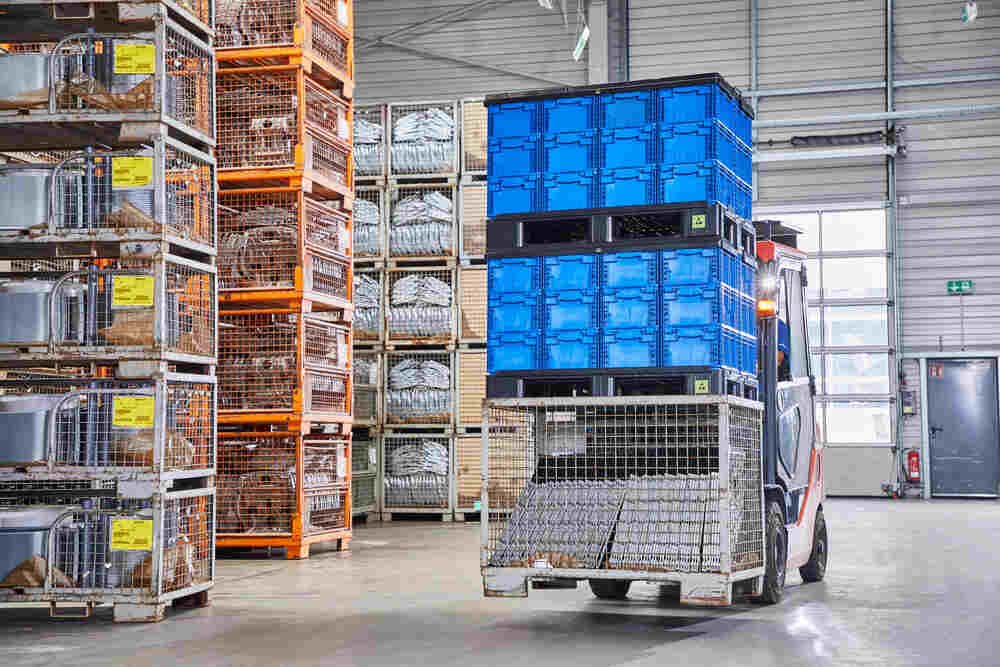Genel
Bar code identification with the best recommendations from AI

Using Artificial Intelligence (AI) can be very worthwhile when it comes to identifying the bar codes on goods. Interfering factors can be identified quickly and easily both during commissioning of a system and during operation.
No need for time-consuming searches
Bar code readers are sensors used to identify goods and materials in production or logistics. They do so by detecting bar codes that meet one of a number of standards and then supplying the IDs of the bar codes to a superior system. When using these devices in automated applications, the main objective is to achieve the highest possible reading quality: Essentially, when bar code readers detect the labels, the quality with which they perform this task varies, and this quality can be indicated as a percentage. The percentage relates to the contrast detected. If the value is below a certain threshold, the label is no longer read. One challenge faced by system operators is to find bar code readers as quickly as possible when they are no longer providing sufficient reading quality, and to determine the reasons for this – without additional data regarding the possible sources of error, this can be a time-consuming task. Particularly in large systems, for example in intralogistics, that have up to 1,000 bar code readers and kilometer-long transport routes, the search is like looking for a needle in haystack: If in doubt, a technician must trace the entire route of a transport material in order to identify a poorly aligned sensor or the interfering factors in its direct environment, all while under time pressure. The situation is made worse by borderline cases, such as when the bar code reader is somewhat aligned and reads successfully most of the time, but occasionally does not detect labels. This may be because the bar code reader is slightly inclined or only reads in the border area, or other factors may play a role, for example labels of insufficient quality.
Factors that influence reading quality
However, generating corresponding data to find the causes of errors using the bar code reader itself is only possible under certain circumstances. It is true that the sensors monitor their own status and transfer data to the superior system via OPC UA if required. However, this self-monitoring has only very limited functionality – a sensor only considers its own view. This means that it sends information such as “I’m currently reading,” “Excellent reading,” or “Very poor reading” – i.e. its calculated percentage reading quality. The reason for the poor reading quality cannot be identified by the individual device. There are three possible influential factors in this case: The device itself, the bar code label and interfering factors in the environment. Possible sources of error relating to the bar code reader itself include poor alignment to the labels to be detected or a technical fault. In turn, labels can be damaged, soiled or poorly printed, which, depending on the degree of damage or printing quality, may only reduce the reading quality or may prevent identification entirely. Interfering factors in the environment include vibrations, dust, and glare caused by sunlight or emitters in the background. Humidity, for example in cold stores, can be an interfering factor if this causes fogging on the scanning window of the bar code reader.
Artificial intelligence provides the context
AI can help to distinguish the various causes from one another and in doing so identify the reasons for interferences or poor reading quality. Leuze is working with an automobile manufacturer to develop a solution that enhances sensors with data from the overall context. The advantage of this is that the bar code readers remain operational as usual without additional work being generated for the customer during installation. The data volumes are large: Many labels pass by many bar code readers during the process and are read at various installation locations. This is where the overall context comes from. In mathematical terms, this overall context can be described as an equation with many unknowns – countless bar code readers, labels that crop up even more frequently and the various installation locations of the readers. At every station and for every label there is a different result in terms of reading quality percentage. AI solves this complicated equation system and answers the questions about whether a poor reading quality occurs always with a particular bar code reader, only with one label or a particular label type or always at a particular installation location.
Machine learning via recommendation algorithms
To achieve this, Leuze uses recommendation algorithms, i.e. AI-based recommendation methods. These are the same methods that are used by streaming services, for example, to evaluate user behavior and recommend corresponding films or series based on this analysis. In this user behavior analogy, the bar codes correspond to the films and the bar code readers to the users of the streaming services. The recommendation algorithm rates a label as more or less “attractive” for different bar code readers. In this way, it is possible to determine which sensor or which label with a certain percentage is “unattractrive”, i.e. borderline or noticeably problematic.
Per edge device or cloud
In technical terms, an AI-based solution of this kind can be implemented via edge devices or a cloud, depending on the customer requirements and the respective system. An edge device is a separate device that is located in the vicinity of a sensor group and gathers, analyses and passes on the data of the sensor group. Multiple edge devices can be connected to one another. Since an edge device is capable of two-way communication, not just gathering and evaluating data but also sending the analysis back to the sensors, a bar code reader can also pass on this information and report that there is a problem. The advantage of this is there is no need to make any changes to the IT architecture of the customer. Alternatively, the solution can be operated via a cloud if data from separate locations is to be merged.
Significant potential for savings
Leuze’s approach of using AI-based recommendations to identify errors offers huge advantages both during commissioning and during operation of a system. Fast commissioning saves time and money. In this case, it is useful if the causes of poor reading quality are identified immediately. During operation, this method enables predictive maintenance. This means that if a shutdown will soon be required, system operators can take suitable measures in good time and, for example, manufacture and outsource in advance so that they can continue to supply their customers. In some cases, data from multiple years can be used to facilitate this early detection. In addition, the system learns continuously. Therefore, using AI is always worthwhile when it comes to quickly and reliably identifying factors that interfere with the identification of bar codes on goods.
Genel
The most common conveyor belt issues and how to prevent them

Like any type of machinery, conveyor belt systems will eventually experience issues from time to time. Regardless of how well-maintained conveyor belt parts are, it’s normal to face problems, especially given that conveyor belts are one of the most used pieces of equipment across many industries.
While some problems are bound to happen, there are ways to prevent common issues and extend the life of your conveyor belt parts. Below are some of the most common conveyor belt problems and ways to prevent them.
Material spillage
Material accidentally sliding, rolling, or spilling over is inevitable, especially for productions that move a lot of loose or heavy products. However, if your conveyor system is experiencing an increase in spillage incidents, it could be an issue with areas that are causing excess shaking or rattling.
To prevent material spillage, be sure to keep your conveyor system well-maintained. Clean the conveyor belt and parts regularly and consider installing impact beds.
Seized rollers
Excessive material spillage is the most common cause of seized rollers, which can halt production altogether. To prevent this downtime, we recommend installing Luff’s patented High Moisture Seal & Anti-Lock Shield. This polymer disc sits inside the end cap and remains stationary as the roller rotates around it, allowing the roller to turn freely, even with material built up between the roller end and the conveyor idler.
In addition to Luff’s High Moisture Seal & Anti-Lock Shield, you can prevent seized rollers by carefully inspecting them on a regular basis. This should be part of your regular maintenance routine.
Material blockage
Material blockage can happen due to wear and tear on the conveyor belt, sharp edges, and weak points in the system. When blockages happen, they can cause the conveyor belt to simply stop moving.
To avoid this issue, again be sure to keep a well-maintained system. Inspect your conveyor belt for any holes, weak points, and sharp edges that could potentially cause a blockage and have them repaired as soon as possible. Another solution to prevent material blockage is to install guide rollers which help reduce the chance of severe belt damage from sharp edges.
Mistracked conveyor belt
Mistracking happens when the belt moves too far to one side, which can lead to material spillage, material blockage, and cause premature wear on other conveyor belt parts. A mistracked conveyor can throw off the entire system The best way to prevent a mistracked conveyor is to have inspections and adjustments done on a regular basis. If you notice small signs of misalignment such as uneven belt wear, address them immediately before they become bigger problems.
To sum it up, some of the most seemingly small issues can turn into bigger problems that can halt operations. These common issues can be prevented and solved with simple conveyor belt parts and accessories.
Source: luffindustries.com
Genel
Plastic load carriers from the automotive specialist

A trouble-free internal material flow is one of the essential factors for efficient production of components for the automotive industry. Errors and faults in transport and storage systems result in time-consuming and costly interruptions. The Craemer Group, internationally established supplier to the automotive industry, is one of the leading manufacturers with large-scale production of automotive modules made of metal and large-volume load carriers made of plastic.
The automotive expertise of the Germany-based Craemer Group founded in 1912 has contributed to the development and production of injection-moulded load carriers made of sturdy plastic. Versatile plastic pallets and pallet boxes from Craemer reliably reduce downtime in the automotive and supplier industries.
Special plastic load carriers for customised applications
For more than 50 years Craemer has been developing and manufacturing durable pallets made of high-quality polyethylene (PE). Today, the extensive portfolio includes half pallets, Euro pallets and industrial pallets for a wide range of applications. One example from the company’s portfolio is the D1 plastic pallet with its 22-millimetre rim: It is specially designed for the automotive and supplier industry and ensures high load security when used with small load carriers (SLC) and clear packaging (blisters). Unlike wooden pallets, box elements can be transported precisely and safely, without strapping and fastening, thanks to the edge system.
Thanks to their 22-millimetre outer rims, the CS plastic pallets in Euro format and industrial sizes are also ideally suited for use with SLC. The ESD (electrostatic discharge) variants of the CS pallets are made of conductive material and protect sensitive components from uncontrolled electrostatic discharge. The CS pallet is optionally available with Palgrip® anti-slip runners.
The CR plastic pallets are ideal for heavy loads. They permit versatile solutions thanks to a load capacity of up to 1750 kilograms and an anti-slip coating on the deck which makes them ideal for high rack warehouses. On the other hand, Craemer H and TC pallets offer optimum hygiene conditions for sensitive processes. The H model is also available in a conductive version. The pallet portfolio for the automotive and supplier industry is complemented by the lightweight SL pallet in Euro format with an overall height of only 120 millimetres.
Safe transport and easier handling of commodities
For the automotive industry, particularly impact-resistant and splinter-proof pallet lids are an ideal complement to Craemer plastic pallets. They are available in Euro format and industrial sizes and are suitable for all common returnable containers (such as SLC). Thanks to their precise fit they close perfectly flush. Integrated strapping grooves and locks on the short sides of the lid optimise the load security of sensitive commodities. As conductive ESD variants, they also reliably protect electrostatically sensitive components from uncontrolled discharges.
Other products of the Craemer automotive range: CB pallet boxes. Thanks to the one-piece injection-moulded production and their sturdy construction, these large load carriers made from PE convince with their high resistance and long service life. They are available in Euro format and industrial sizes. In addition, they are UN-certified and thus approved for the transport and storage of hazardous goods. Precisely fitting lids are available as additional accessories. With its complete portfolio of load carriers and accessories, the Craemer Group supports safe transport and storage processes in the automotive industry.
Genel
Mondi partners with Heiber + Schröder to launch the new high-performance machine eComPack for automated packaging of its EnvelopeMailer for eCommerce

Heiber + Schröder’s mechanical engineering combined with Mondi’s packaging and paper expertise enables eCommerce companies to automate the erecting, filling and closing packaging process using the EnvelopeMailer solution he state-of-the-art eComPack doubles output per hour, responding to demand for the automation of paper-based packaging solutions in eCommerce operations
The state-of-the-art eComPack doubles output per hour, responding to demand for the automation of paper-based packaging solutions in eCommerce operations
The new machine perfectly complements Mondi’s universal and fully recyclable corrugated EnvelopeMailer for maximum performance
Mondi, a global leader in packaging and paper, has worked on an innovative collaboration with German machine producer Heiber + Schröder to create a high-speed automated packaging machine that meets the process, efficiency and safety requirements of eCommerce fulfilment operations. The new eComPack machine is designed for mid to large size eCommerce operations seeking efficiency and reliability. It can process up to 500 parcels per hour thanks to an automated erecting, filling and closing process.
The technological expertise of paper and board packaging automation expert Heiber + Schröder forms a perfect synergy with Mondi’s innovative packaging solutions. The resulting high-output eComPack can automatically process a wide scope of goods using one height-adaptable packaging design that is available in different sizes. The equipment stands out for its compact floor space requirement and simplicity in operation and maintenance.
In the rapidly growing world of eCommerce, the combination of an excellent paper-based product and an efficient and economic automated packaging machine is a key differentiator for our customers. The successful introduction of Mondi’s EnvelopeMailer solution increased manual packaging output by 8% compared to standard C-folder packaging. With eComPack, we are now enabling our customers to double their output and optimise packing operations in fulfilment centres handling high volumes,
Tarik Aniba, Sales & Marketing Director, Mondi Corrugated Solutions
The eCommerce market has grown significantly in recent years, accounting for approximately 20% of global retail sales in 2021¹. This means a wider variety of goods is being distributed, which increases packing complexity and requires versatile packaging solutions of different sizes and shapes. At the same time, with the rising cost of labour, the desire for packing machines in eCommerce is more prominent than ever before. To help customers tackle these challenges, eComPack provides a solution dedicated to the automated packaging of Mondi’s corrugated eCommerce solution EnvelopeMailer.
Made to safely fit single or multiple items and rectangular as well as irregular shapes up to 7 cm in height, the EnvelopeMailer’s flexibility in the fulfilment process, efficiency in handling, and economical use of material and space have made it an all-around new standard in the market since its launch in 2020.
André Garmer, Managing Director Heiber + Schröder, adds: “Together with Mondi we developed the machine in a very dynamic co-creation process. The result is a robust, user-friendly machine with top-class usability. Through clever and responsible creation, we were able to synchronise packaging design and machine functionality into a solution that offers tremendous potential if combined with the right packaging solution.”
-

 Conveyor Types2 years ago
Conveyor Types2 years agoConveyor Systems: Total Cost of Ownership
-

 Belt Conveyors2 years ago
Belt Conveyors2 years agoContinental Radar-Based Monitoring System Makes Conveyor Belt Systems More Efficient and Reliable
-

 Genel2 years ago
Genel2 years agoCoal conveyor application
-

 Conveyor Components2 years ago
Conveyor Components2 years agoConveyor Sensor System ready to go
-

 New Products3 years ago
New Products3 years agoBest Product 2021 for KNAPP’s ivii.smartdesk Work Station
-

 Conveyor Accessories2 years ago
Conveyor Accessories2 years agoAll about roller conveyors
-

 Pallet Handling3 years ago
Pallet Handling3 years agoInterroll expands Modular Pallet Conveyor Platform (MPP) with flexible and powerful control solution
-

 Intralogistics3 years ago
Intralogistics3 years agoMHS introduces cross-belt sorter with double-cell design for small items












